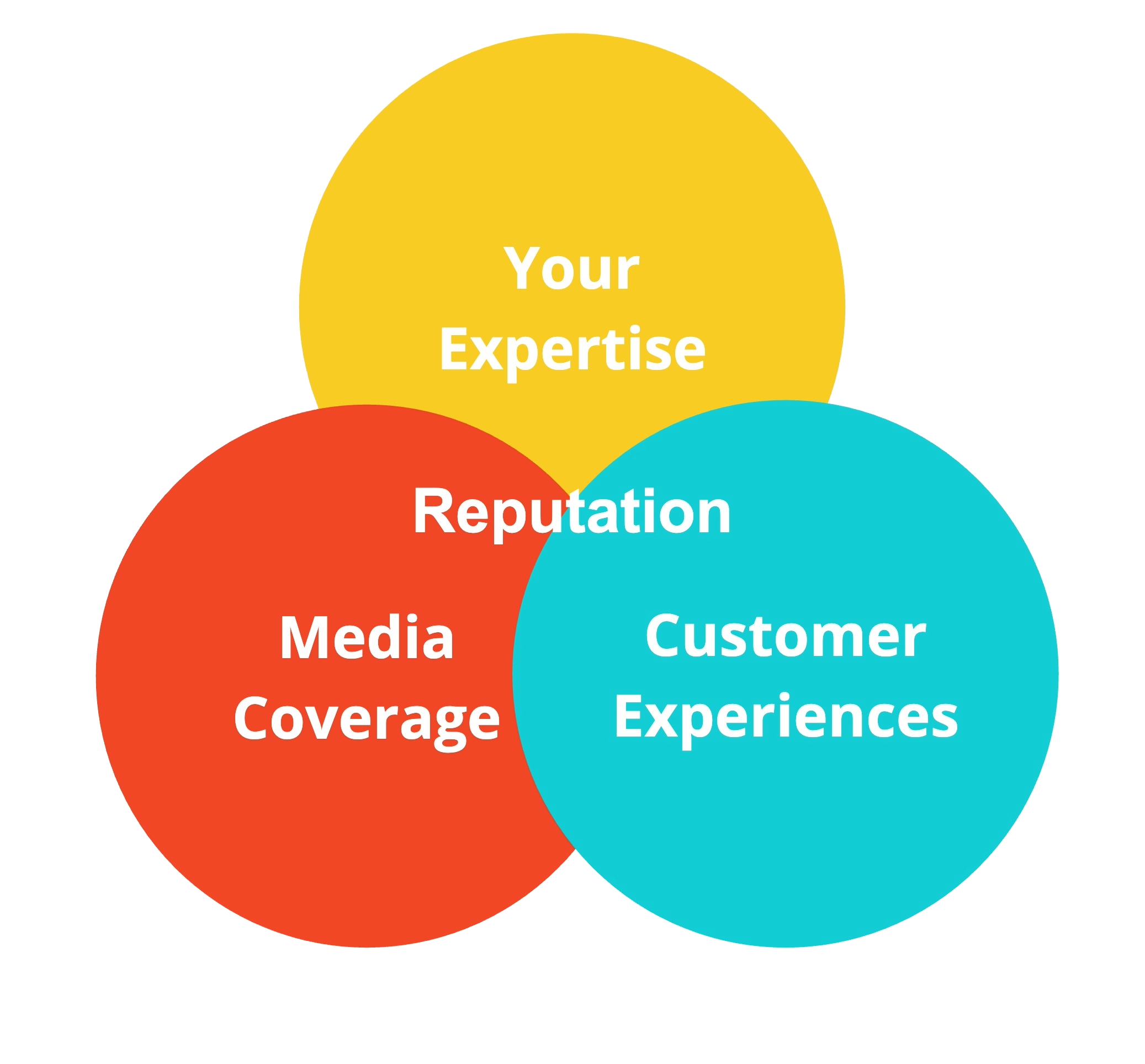Digital PR for SEO
Resources
What is Digital PR for SEO?
A link building alternative
Digital PR for SEO is an integrated SEO & digital PR strategy that builds a site’s reputation, not just a link profile.
The strategy secures both links or brand mentions from the press, blogs, podcasts, and social communities.
Search Engine Reputation?

- It’s a field of expertise
- It’s proof of expertise
- It’s influence
- It’s for an audience
- It’s about the journey
- Google uses AI
- Drives brand search
- Influences ranking
- Search engines
- Podcasts
- Press
- Blogs
- Social
- Awards
How-To’s
Buyer’s Journey Mapping
Customer experience is the foundation of our approach. So, we start with mapping the customer’s online touchpoints.
- Overview
- Steps
- Pro Tips
- Resources
A buyer’s journey map is a visual representation that outlines the steps a customer goes through when considering, purchasing, using, and maintaining loyalty to a product or service. It typically includes the following key elements:
Stages of the Buyer’s Journey: It outlines the main stages – Awareness, Consideration, Decision, Retention, and Advocacy – highlighting the customer’s mindset and needs at each step.
Customer Touchpoints: Identifies the various points of interaction between the customer and the brand, such as websites, social media, customer service, or physical stores.
Customer Actions: Describes what the customer is doing at each stage, like researching products online, discussing options with friends, or writing a product review.
Emotions and Motivations: Captures the emotional state and motivations of the customer at each stage, providing insights into their decision-making process.
Pain Points and Opportunities: Highlights challenges or problems customers face along the journey, as well as opportunities for the brand to engage or provide solutions.
Channels and Content: Details the communication channels and types of content that are most effective at each stage to engage the customer.
Creating a buyer’s journey map using the PureLinq template can be distilled into a simple four-step process:
Gather Customer Insights: Start by collecting data on your customers. Use surveys, interviews, sales data, and customer feedback to understand their needs, pain points, and behaviors. This data will form the foundation of your journey map.
Define Buyer Personas and Stages: Utilize the template to outline key buyer personas, representing different segments of your customer base. For each persona, define the stages of their journey – typically Awareness, Consideration, Decision, and Post-Purchase (Retention/Advocacy).
Map Touchpoints and Channels: Identify the touchpoints where customers interact with your brand across podcasts, blogs, press, and social. Incorporate these into the template, aligning them with the respective stages of the buyer’s journey.
Identify Opportunities and Pain Points: Use the PureLinq template to mark key pain points and opportunities for improvement at each stage of the journey. Highlight where you can enhance the customer experience, provide better information, or streamline the process.
Deeply Understand Your Audience: Customize the map based on detailed buyer personas. Go beyond demographics; consider psychographics, behaviors, preferences, and unique challenges of your target audience.
Incorporate Real Customer Feedback: Use direct quotes, stories, and examples from actual customer interactions. This brings authenticity to the map and ensures it reflects real customer experiences.
Cross-Functional Collaboration: Involve various departments (marketing, sales, customer service) in creating the map. This ensures a comprehensive view of the customer journey from different perspectives within your organization.
Regular Updates and Iterations: The customer journey isn’t static. Regularly update the map based on new data, market trends, and changes in customer behavior or preferences.
Highlight Moments of Truth: Identify and emphasize critical touchpoints or ‘moments of truth’ where customers make key decisions. Focusing on these moments can be crucial for conversion and customer retention.
PureLinq Templates:
Further reading:
Customer experience is the foundation of our approach. So, we start with mapping the customer’s online touchpoints.
- Overview
- Steps
- Pro Tips
- Resources
Overview
Steps in process
Tips from our experts.
PureLinq Templates:
Further reading:
Research for Digital PR

Expertise Identification

Uncover an individual or company expertise to guide which media trends and research to focus on.
- Overview
- Steps
- Pro Tips
- Resources
What is it?
Why it’s important?
How to identify it.
Identifying expertise:
Improving expertise:
Using expertise:
Tools & Templates
Buyer’s Journey Map

PR + SEO
Funnels

Public Data
Research





